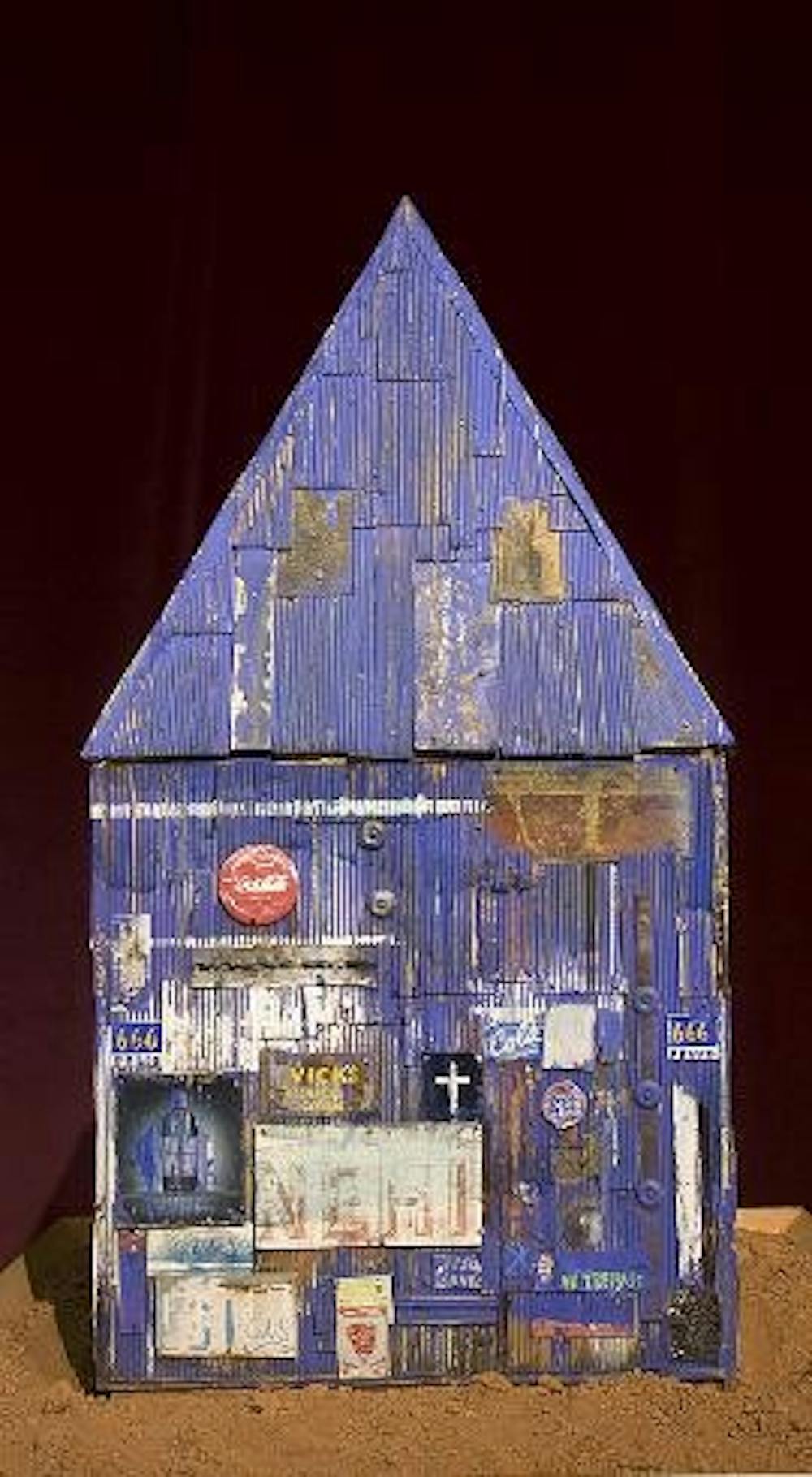Artist William Christenberry is no stranger to odd looks from store clerks. During a tour of his new exhibit "Site/Possession," which opened Tuesday at the AU Museum, the artist recounted one such instance.
"'I have to ask, sir,'" Christenberry recalled the cashier saying, "'What are you going to do with 20 G.I. Joe dolls?' And I said, 'You wouldn't believe me if I told you.'"
It is hard to believe what Christenberry can do with those dolls, or paint or ink for that matter. The exhibit features 50 of Christenberry's multimedia tree drawings, which use high-quality German ink, pencils taped together in bundles and other mark-making materials. His diverse work features unusual, graceful lines flared across the page, while he also chooses to use less traditional media, like G.I. Joe dolls.
Much of Christenberry's art education focused on abstract expressionism. An early painting from his days at the University of Alabama greets visitors to the exhibition and shows this influence at its strongest. Though Christenberry's work diverged from the style as he matured, there is no doubt his drawings are still strongly informed by this early study.
After an eye operation in 1960 that left him hospitalized for a period, Christenberry completed his first tree drawing. He said he finds it striking how much his drawings still resemble this first tree.
"I'll never grow tired of trees," he said.
Christenberry's drawings are a look at part of the Alabama landscape. Although a D.C. resident for many years, the artist was born and raised in Tuscaloosa, Ala. The deep southern state is the driving force behind a good deal of his pieces.
"Klan Room Tableau," a rare and personal piece clearly shaped by Christenberry's Alabama experiences, stands as the centerpiece of the exhibit. The repetition and volume of pieces in the tableau overwhelm the viewer with the horror of the Ku Klux Klan. The installation is best viewed alone.
So just what did Christenberry do with those G.I. Joe dolls? He, with the help of various old girlfriends and their mothers, transformed them into tiny Klansmen. Those 20 dolls were the first of many intricately dressed in precise Klan regalia, including one Imperial Wizard doll dressed in purple.
"You'll notice I've punished some of them," Christenberry pointed out. It's true-some are encased in wax, others stuck with pins, and one even wrapped in lead. The tableau features a series of drawings, a cloth doll Christenberry had made to his specifications and even a holograph. Repetition of the cross and the colors red, white and blue unite the pieces. The artist noted that these are the things the Klan abuses in their imagery.
Though never secret, the "Klan Room Tableau" began as a personal expression of Christenberry's anger and disgust for the group.
"I'm no collector of Klan memorabilia," he said, "but people found out and started sending me things."
Friends also began supplying him with old G.I. Joe dolls. It is the personal nature of this work that makes it such an important part of the exhibit's overall comprehensive look at Christenberry's work.
The exhibit was originally created for the University of Virginia Art Museum. The museum's director, Jill Hartz, said of "Klan Room," "Without [it], Christenberry's work cannot be understood or appreciated fully."
Indeed, Klan imagery shows up in many of Christenberry's pieces, particularly his "Dream Buildings." The structures, topped with hood-like spires, appeared to the artist in a dream. He has built many, the tallest of which is featured in "Site/Possession."
Christenberry's repetition of somewhat disturbing, Klan-related imagery is true to his artistic ideology. Smiling, he quoted Pablo Picasso, as saying, "Art isn't just something you hang on the wall-it's a weapon of offensive and defensive war against the enemy."
Whether the enemy is Klansmen or the blank page, Christenberry fights hard, uses his weapons wisely and often wins.





